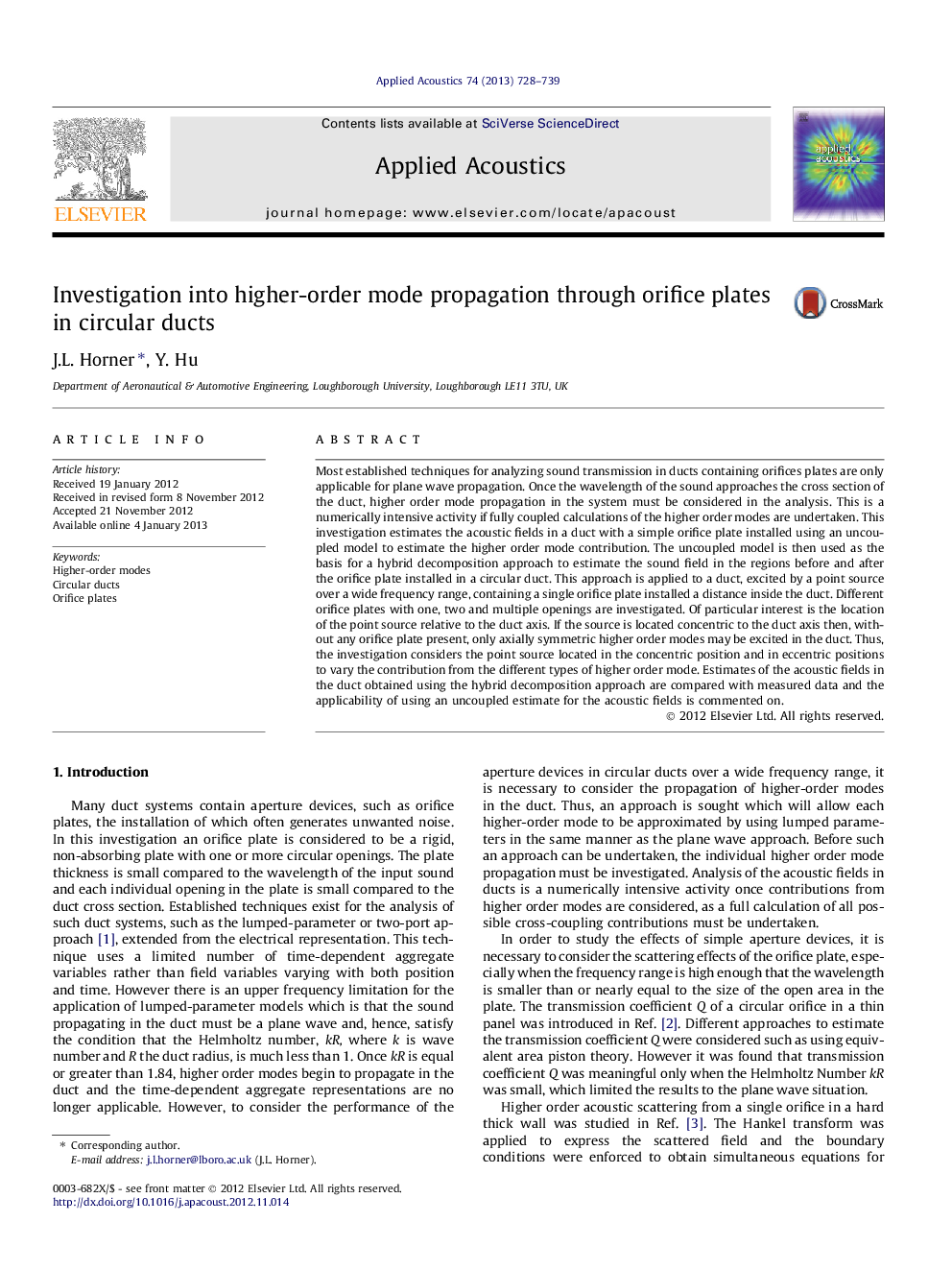| Article ID | Journal | Published Year | Pages | File Type |
|---|---|---|---|---|
| 754637 | Applied Acoustics | 2013 | 12 Pages |
Most established techniques for analyzing sound transmission in ducts containing orifices plates are only applicable for plane wave propagation. Once the wavelength of the sound approaches the cross section of the duct, higher order mode propagation in the system must be considered in the analysis. This is a numerically intensive activity if fully coupled calculations of the higher order modes are undertaken. This investigation estimates the acoustic fields in a duct with a simple orifice plate installed using an uncoupled model to estimate the higher order mode contribution. The uncoupled model is then used as the basis for a hybrid decomposition approach to estimate the sound field in the regions before and after the orifice plate installed in a circular duct. This approach is applied to a duct, excited by a point source over a wide frequency range, containing a single orifice plate installed a distance inside the duct. Different orifice plates with one, two and multiple openings are investigated. Of particular interest is the location of the point source relative to the duct axis. If the source is located concentric to the duct axis then, without any orifice plate present, only axially symmetric higher order modes may be excited in the duct. Thus, the investigation considers the point source located in the concentric position and in eccentric positions to vary the contribution from the different types of higher order mode. Estimates of the acoustic fields in the duct obtained using the hybrid decomposition approach are compared with measured data and the applicability of using an uncoupled estimate for the acoustic fields is commented on.
